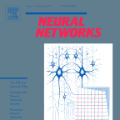In recent years, the unprecedented growth in digital payments fueled consequential changes in fraud and financial crimes. In this new landscape, traditional fraud detection approaches such as rule-based engines have largely become ineffective. AI and machine learning solutions using graph computing principles have gained significant interest. Graph neural networks and emerging adaptive solutions provide compelling opportunities for the future of fraud and financial crime detection. However, implementing the graph-based solutions in financial transaction processing systems has brought numerous obstacles and application considerations to light. In this paper, we overview the latest trends in the financial crimes landscape and discuss the implementation difficulties current and emerging graph solutions face. We argue that the application demands and implementation challenges provide key insights in developing effective solutions.
翻译:近年来,数字支付史无前例的增长助长了欺诈和金融犯罪的相应变化。在这一新的格局中,传统的欺诈侦查方法,如基于规则的引擎,基本上已经失效。大赦国际和采用图表计算原则的机器学习方法引起了极大的兴趣。图表神经网络和新出现的适应性解决办法为欺诈和金融犯罪的未来探测提供了令人信服的机会。然而,在金融交易处理系统中采用基于图表的解决办法,带来了许多障碍和应用考虑。在本文件中,我们概述了金融犯罪领域的最新趋势,并讨论了当前和新出现的图表解决方案面临的实施困难。我们认为,应用要求和实施挑战为制定有效解决方案提供了重要的见解。




